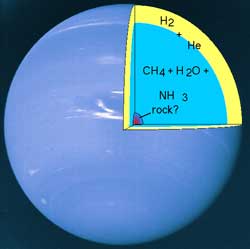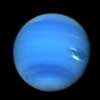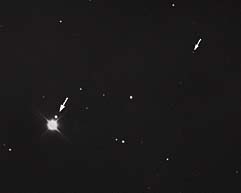|
Features
- Appearance:
Bluish from methane (more than Uranus), cloud bands and
spots; the strongest atmospheric circulation of all the gas giants!
- Rotation: The atmosphere rotates
once every 17.3 hrs (the interior rotates faster, but the planet
is not very flattened); tilted 30° with respect to the orbit
(seasons).
- Surface features: More cloud
features than Uranus, because it is heated from below, like Jupiter
and Saturn; Great Dark Spot (seen by Voyager, gone by 1994).
- [Interior: Molten rocky core,
Earth-sized; The rest is a mix of water, ammonia, methane.]
|
 |






_250x200.jpg)
![]()